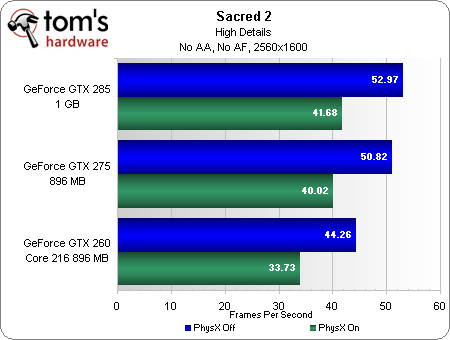Nvidia GeForce GTX 275 Preview: A Well-Timed Retaliatory Strike?
Still Waiting On A Killer PhysX App?
Both Nvidia and ATI seem to be de-emphasizing the technology behind their respective architectures and focusing more on the features that technology enables. With the Radeon HD 4890, it was DirectX 10.1 and the games leveraging ATI’s unique support for the newer API. Nvidia is putting its muscle into CUDA and PhysX—two value-adds that we’d still consider being in their youth. However, both are certainly receiving plenty of developer attention and are now actually accessible by mainstream customers through a number of third-party applications.


Mirror’s Edge was the first app that had enthusiasts actually anticipating PhysX support, and my friend Brandon Bell at FiringSquad already wrote up a nice look at how turning the feature on or off actually affected the look, feel, and performance of Mirror’s Edge. Now Nvidia is talking about another title being patched to include PhysX: Sacred 2.
Now, I tried playing through a bit of Sacred and, having come from three too many years of World of Warcraft, this fantasy RPG is much more difficult to get into. The plot just isn’t there. However, the graphics are undeniably lush and the game is supposedly selling well in Europe specifically.
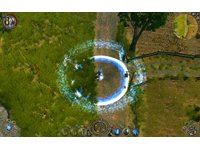
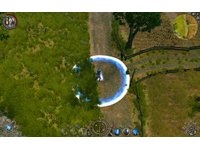
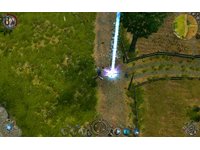
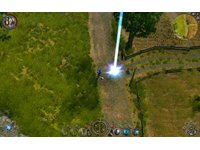
And so I cranked the game up to 2560x1600, turned the detail settings up to High, and tested with and without PhysX enabled. It bears note that the PhysX enhancements are very specific. Each class has two different spells that are enhanced with thousands of particles. Moreover, several of the boss fights are also tweaked to include visuals you wouldn’t otherwise see with PhysX turned off. Those few features, sprinkled sparsely throughout the game, wouldn’t have been enough for me. But the environment is also enhanced. Wind, for instance, stirs up leaves, which blow around in fairly believable gusts. Swap back to the non-PhysX version and you really do find yourself asking, “Hey, what the heck happened?”
As you can see, PhysX incurs a performance penalty, but nothing like when you try to enable it on a platform that doesn’t support hardware acceleration (the Radeon HD 4890 will do 47.42 frames per second with PhysX off, but only eight with it turned on).
True skeptics will wonder about the future of PhysX given its proprietary nature and the recent demonstration of Havok ported to OpenCL. That’s a fair enough concern, and my response would be simply: bank on PhsyX for what it can do today, not the games you hope it’ll materialize in tomorrow. If Mirror’s Edge or Sacred 2 are titles you’ve tried and liked, PhysX will make them more immersive. The technology is, after all, only as good as what it lets you do at present.
For those of you wondering more about CUDA, we’ll have a complete look at the current range of GPGPU-accelerated applications a little later this month, including efforts from both ATI and Nvidia. And of course, as ATI furthers its efforts to bring physics acceleration to its own GPUs, we'll cover that in greater depth as well.
Get Tom's Hardware's best news and in-depth reviews, straight to your inbox.
Current page: Still Waiting On A Killer PhysX App?
Prev Page The GeForce GTX 275’s Inner Workings Next Page New Features In GeForce 185-
privardo This would be my good price, good performance and the right time upgrade from 8800 GTS 512mb. Thanks for this awesome review!Reply -
eklipz330 i think putting the competitors next to eachother would have been easier on the eyes... putting 4870x2 gtx295 next to eachother, 4890 gtx275 next to eachother...you catch my driftReply -
cangelini Yeah, but with each resolution its own color, after looking at it both ways, it was easier to put each product family in descending order--hopefully it makes just as much sense that way!Reply -
eklipz330 srry for dp butkudos to nvidia for stepping up their game in the last second that had nothing to do with renaming cards. an attractive card at an attractive price.Reply
it'd be smart for ati to not release the 4890x2. wouldn't make any sense, like my grammar skills. hopefully drivers can catch up and do some damage, id doubt they woudl do anything dramatic though. -
megamanx00 Too bad they didn't overclock the 4890 and the 275 for the review. I would have liked to have seen how the two cards compared overclocked. The heat and power dissipation on the 4890 would probably be a little scary though :D.Reply -
megamanx00 I think the big thing for nVidia now is, who's going to spend money on a 285 with the 275 so close?Reply -
cangelini megamanx00Too bad they didn't overclock the 4890 and the 275 for the review. I would have liked to have seen how the two cards compared overclocked. The heat and power dissipation on the 4890 would probably be a little scary though .Reply
No need to fuel the tin-foil brigade elsewhere on the Web re: hand-picked cards. When we can get our hands on these boards for our System Builder Marathons, straight from e-tail, then we'll give you the goods on overclocking with the same boards available to everyone else! -
privardo ReplyOriginally we said that the price would be $249 in the US, and €249 in Europe, however if the Euros-to-USD conversion is correct (1.00 Euro = 1.31 U.S. Dollars), the North American version should cost $327 instead.
If the retail price for this card is turn to be over $300, they will never fool this monkey cause he will just get two HD 4770 and crossfire'd them, which surely beat a single 275 -
privardo Reply"Originally we said that the price would be $249 in the US, and €249 in Europe, however if the Euros-to-USD conversion is correct (1.00 Euro = 1.31 U.S. Dollars), the North American version should cost $327 instead."
If the retail price for this card is turn to be over $300, they will never fool this monkey cause he will just get two HD 4770 and crossfire'd them, which surely beat a single 275 -
ifko_pifko Well... summing all the framerates is just nonsense. ;-) The games with higher fps will weigh more than the others. (I know that in this test the variance in fps is not as wide as in tests with more games, but keep that in mind in the future please and learn the basics of statistics... )Reply
